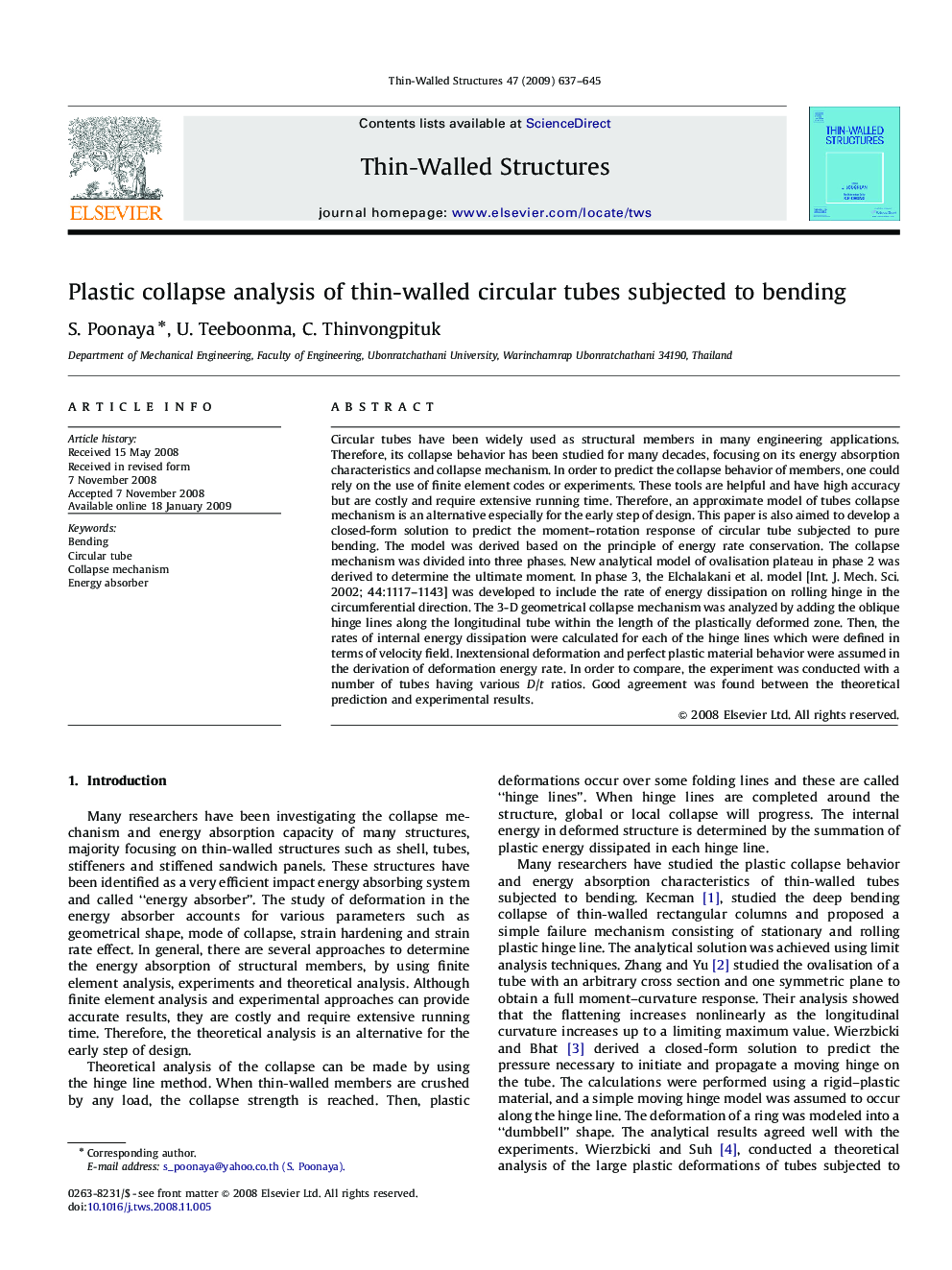| Article ID | Journal | Published Year | Pages | File Type |
|---|---|---|---|---|
| 309673 | Thin-Walled Structures | 2009 | 9 Pages |
Circular tubes have been widely used as structural members in many engineering applications. Therefore, its collapse behavior has been studied for many decades, focusing on its energy absorption characteristics and collapse mechanism. In order to predict the collapse behavior of members, one could rely on the use of finite element codes or experiments. These tools are helpful and have high accuracy but are costly and require extensive running time. Therefore, an approximate model of tubes collapse mechanism is an alternative especially for the early step of design. This paper is also aimed to develop a closed-form solution to predict the moment–rotation response of circular tube subjected to pure bending. The model was derived based on the principle of energy rate conservation. The collapse mechanism was divided into three phases. New analytical model of ovalisation plateau in phase 2 was derived to determine the ultimate moment. In phase 3, the Elchalakani et al. model [Int. J. Mech. Sci. 2002; 44:1117–1143] was developed to include the rate of energy dissipation on rolling hinge in the circumferential direction. The 3-D geometrical collapse mechanism was analyzed by adding the oblique hinge lines along the longitudinal tube within the length of the plastically deformed zone. Then, the rates of internal energy dissipation were calculated for each of the hinge lines which were defined in terms of velocity field. Inextensional deformation and perfect plastic material behavior were assumed in the derivation of deformation energy rate. In order to compare, the experiment was conducted with a number of tubes having various D/t ratios. Good agreement was found between the theoretical prediction and experimental results.
